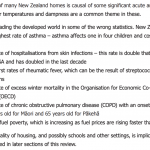Its always challenging to stay abreast of developments in technology and legislation. No doubt its also difficult to change legislation to adapt to lessons learnt from disasters where multiple lives have been lost. Grenfell was and continues to be chastening for anyone involved in building design and we can all see how things should have been done differently. That said any new guidance needs to be issued to industry in a considered way to avoid confusion and unnecessary disruption. There have been shortcomings in that regard for this guidance.
To give credit to the those responsible for compliance in NZ, they have taken this issue seriously and decided to address how we consider the fire performance of facades promptly. This resulted in MBIE guidance MBI 2817 Fire Performance of External Wall cladding systems published in December 2018. It’s fair to say it wasn’t received with much fanfare and there were a few dissenting voices on the assumptions used and background used for the guidance and perceived lack of consultation for the guidance as below:
https://fyi.org.nz/request/9408-guidance-on-fire-performance-of-external-wall-cladding-systems
However the MBIE guidance did attempt to clarify how New Zealand’s fire requirements should be interpreted and how external cladding systems should be tested rather than individual elements of the facade. On the basis that “It may therefore not always be possible to confidently evaluate the overall system performance for facades containing combustible components solely based on small scale fire testing of only the individual components.”
I think that is an entirely reasonable assessment.
The scope was outlined as follows:
• make it clear what constitutes an external wall cladding system for testing external vertical fire spread and assessing performance against the New Zealand Building Code requirements
• describe the suite of fire testing protocols that could be applied to demonstrate compliance with the Building Code
• scope the parameters that need to be considered when addressing external vertical fire spread.
Again an entirely reasonable scope.
I could go into great detail on the guidance but will refine my understanding of the guidance down to the impact on typical NZ facade build ups involving timber (considered medium risk in the guidance (sprinklered up to 25m))
Not overly clear as timber isn’t explicitly mentioned in this fire protocol but it’s clarified here
and here
There is no doubt that omitting timber framing from the facade build up due to fire consideration has impacts and that would be a concern for construction in NZ. However the guidance does not end there.
For high risk cases (above 25m/ non sprinklered) there is an option for a facade assembly where timber framing can be used. If this build up is considered to be compliant for high risk developments it is reasonable to consider this compliant for medium risk developments.
So timber framing can be used if its protected by a protective lining or sheathing that’s been tested and can demonstrate it stays in place in a fire to prevent charring of the timber. These products are currently available in NZ, are cost effective and have extensive testing to demonstrate compliance.
This seems an entirely reasonable, straightforward resolution to the issue that doesn’t cost the earth and has minimal impact to the way things are done in NZ.
It seems contradictory, confusing and strange that this guidance was revised a couple of weeks ago to:
To be blunt this revision makes little sense and is counter to the rest of the guidance. It would be good to have an explanation or clarification of why this revision is required or at the very least in what situations ‘may be’ is appropriate.











